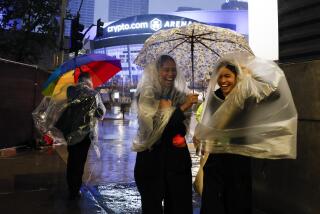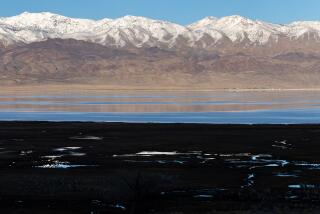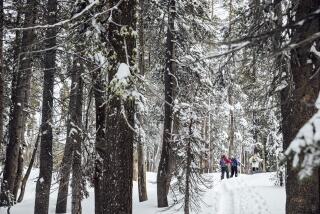And Now, a Water Crisis?
As state officials battle California’s energy crisis, there’s another shortage lurking. The mountain snowpack, critical to water supplies in Central and Southern California, is only about half of normal levels. State Water Project officials call this a critically dry year and are projecting reduced water deliveries of up to 80%. This dire situation could be eased by heavy rain and snowfall during the rest of February and in March--the state has had “March miracles” in the past--but the odds are lengthening.
The central and northern Sierra snowpack feeds both the state Water Project and the Owens River system, which provides much of Los Angeles’ supply. At this point no one expects a household water crisis, in part because big urban and agricultural suppliers have developed considerable backup supplies since the last prolonged drought, in 1987-92. However, most of this water is stored in underground aquifers and it takes considerable electricity to pump it to the surface. The result: A water shortage this year could exacerbate the state’s power crisis during the heat of summer.
This makes it even more urgent for Gov. Gray Davis and the Legislature to adopt a comprehensive energy program, including conservation, to carry the state through the peak-use summer months without blackouts. They might also consider programs that would assist family farmers in meeting higher pumping bills this summer.
A real water crunch will come in 2002 if next winter is another dry one. This would not be a surprise. California suffered eight droughts during the 20th century, lasting two to five years each. It now has been nine years since the end of the last drought.
The prospect of a drought should also spur other action in Sacramento, including stronger legislation requiring an assured water supply before developers can build large housing tracts. The managers of Cal-Fed, the massive federal-state effort to restore the Sacramento-San Joaquin Delta, need to focus more intently on the development of new water storage, especially in Northern California. Governments also need to proceed with important conservation projects such as the lining of the All-American Canal between the Colorado River and the Imperial Irrigation District, to keep water from leaking out along the way.
There are plenty of actions that the state and consumers can take, but betting on a wet spring should not be one of them.
More to Read
Sign up for Essential California
The most important California stories and recommendations in your inbox every morning.
You may occasionally receive promotional content from the Los Angeles Times.










